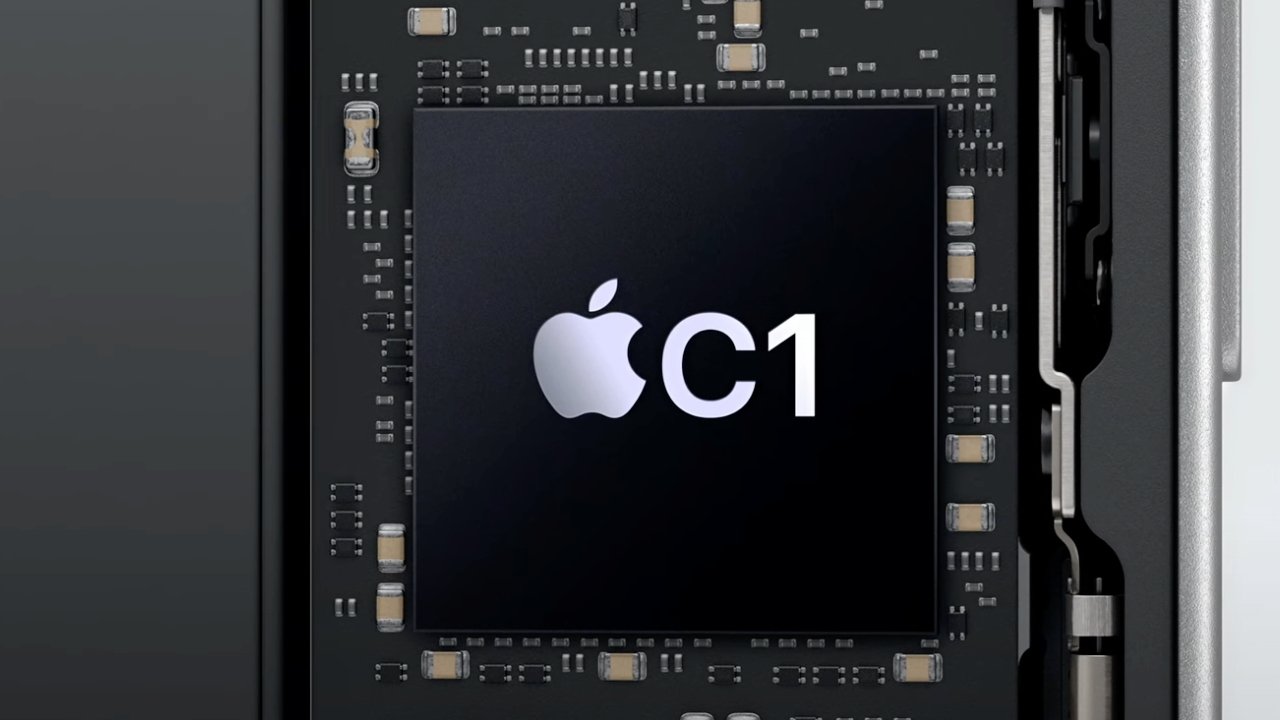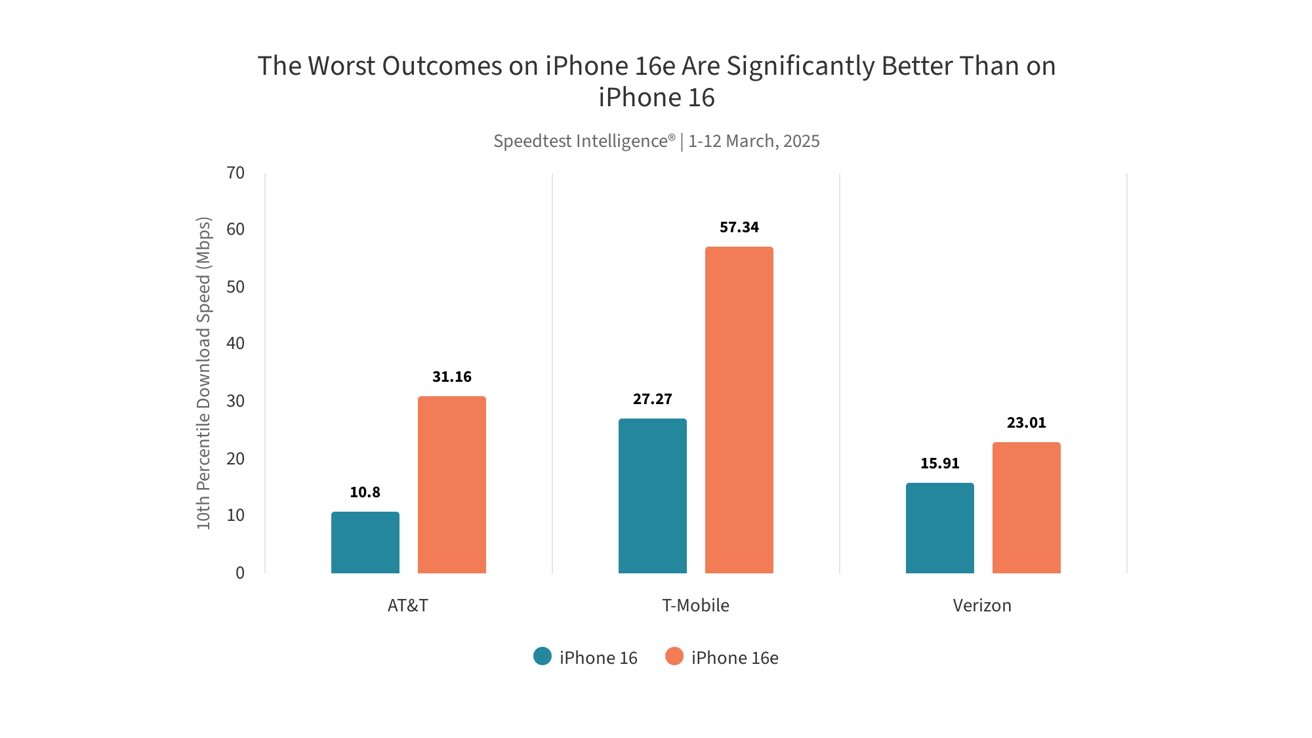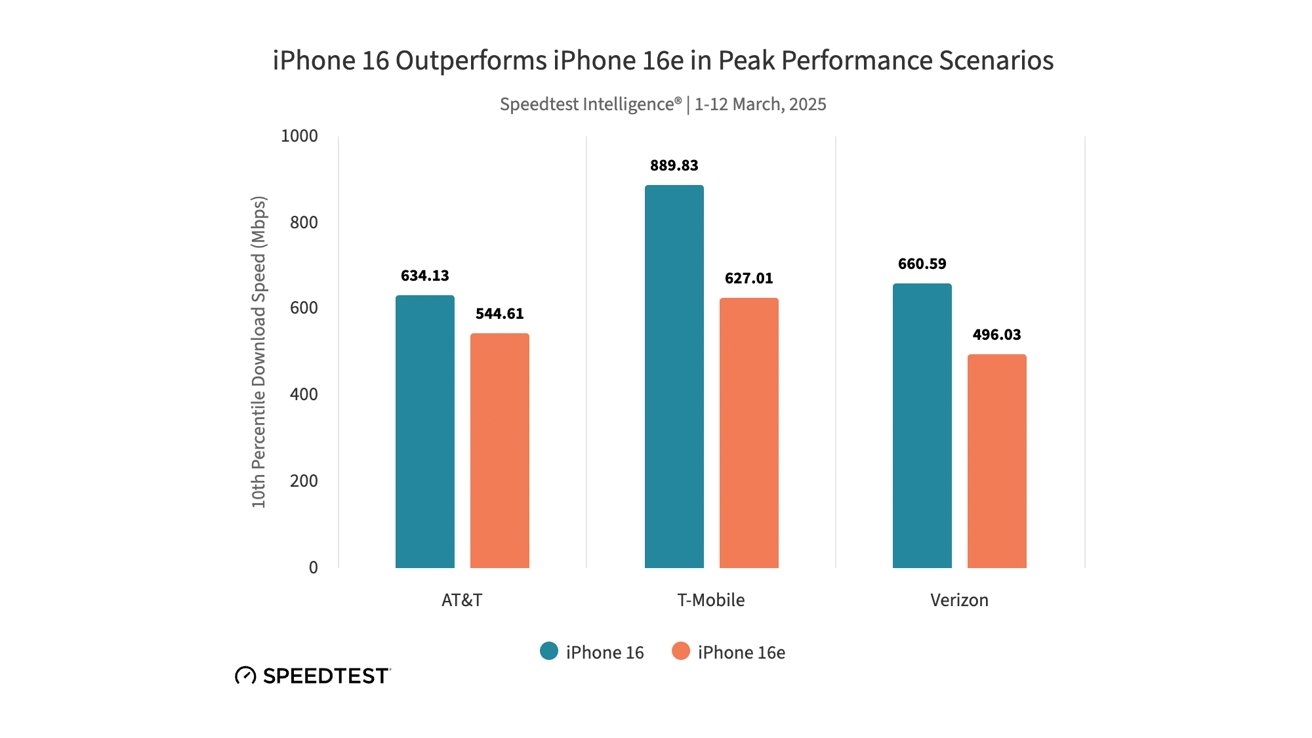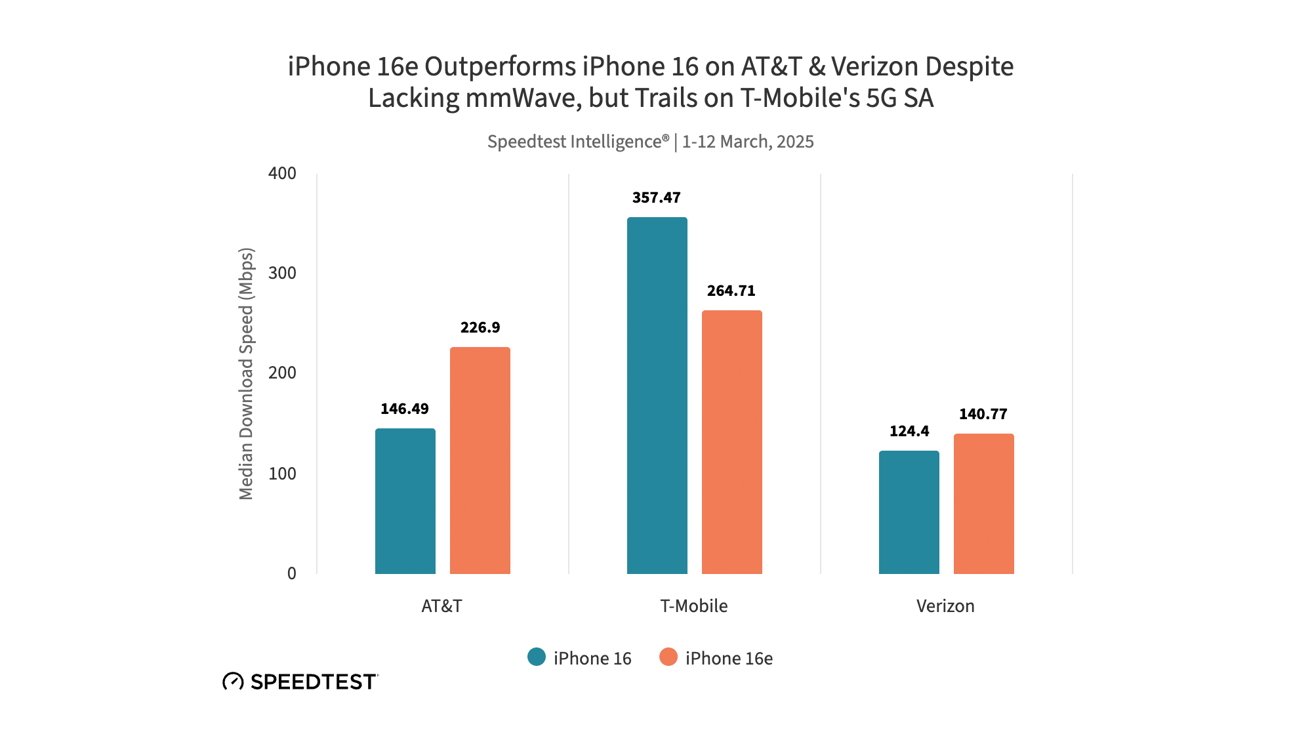Apple's iPhone 16e 5G surpasses iPhone 16 in most real-world speed tests
While much has been written throughout the years about Apple's cellular modem and how it would stack up versus Qualcomm, Apple's C1 modem in the iPhone 16e is no slouch when it comes to actual internet speeds.

Apple's C1 modem -- image credit: Apple
The iPhone 16e is the first of Apple's phones to employ its in-house, custom C1 modem. Previously, Apple had employed chips created by Qualcomm, including those in the iPhone 16 line.
Ookla, a company known for measuring internet performance metrics, has offered up some data that shows how Apple's iPhone 16e is fairing against its higher-end brethren. In most real-world cases, Apple's modem is on top.
When it comes to worst-case speeds, the iPhone 16e handily outperformed the iPhone 16. For example, T-Mobile users in some of the worst served areas of the network saw download speeds of 57Mbps, while the iPhone 16 saw 27Mbps.

10th percentile performance across networks | Image credit: Ookla
The iPhone 16 lineup, however, has better top-end performance, at least in the ideal scenarios. On T-Mobile, the users with the best overall connectivity and network exposure saw download speeds averaging nearly 890Mbps on the iPhone 16, versus 627Mbps on the iPhone 16e.

iPhone 16 sees faster speeds in best case scenarios | Image credit: Ookla
Interestingly enough, despite the fact that the Qualcomm modem supports mmWave, that doesn't seem to be the deciding factor. Even though Apple's C1 modem does not support mmWave, the iPhone 16e still outperformed the iPhone 16 in most scenarios.
On T-Mobile, for example, the iPhone 16e averaged about 265Mbps down, while the iPhone 16 averaged around 357Mbps down. However, the iPhone 16e still outperformed the iPhone 16 on Verizon and AT&T's networks.

The iPhone 16e outperforms the iPhone 16 in most scenarios | Image credit: Ookla
Despite buildouts continuing, mmWave penetration and service areas are low in the US, and lower still everywhere else. Many countries have no mmWave deployment at all.
For most people, on most networks, most of the time, the iPhone 16e is going to be a fair bit faster than the iPhone 16 lineup. There are situations, like outside, downtown in a large metropolitan area with a robust mmWave deployment, on an uncongested network where the iPhone 16 will win.
Ultimately, which network you use, coupled with when and where you use it, will likely influence your top speeds more than the iPhone model you have.
As Ookla points out, on those on T-Mobile's networks, regardless of phone model, saw higher speeds across the board, whether it be peak performance or the worst-case scenario. Verizon users typically skewed lower than the other two networks.
Read on AppleInsider

Comments
It's the latter that benefits all iPhone 16e owners.
Also top speed isn't really beneficial to many users most of the time. What is far more useful is better connectivity in areas of poor coverage because everyone suffers from that periodically.
And for that matter, there's nothing that encourages me to believe GSMArena's tests any more than any other media outlet's.
A year from now it'll be way more clear once there's a statistically significant sample size of realworld usage data. But I will wager my money on Apple semiconductor design over Qualcomm in the medium term to long run.
Remember that Apple has the inherent advantage of designing chips for their own usage. They don't have to create a design to sell to others like Qualcomm does. In-house exclusivity is one of Apple's competitive advantages. Apple also writes their own software for their proprietary hardware. No one else gets to use A-series or M-series SoCs nor do they get to run iOS or macOS.